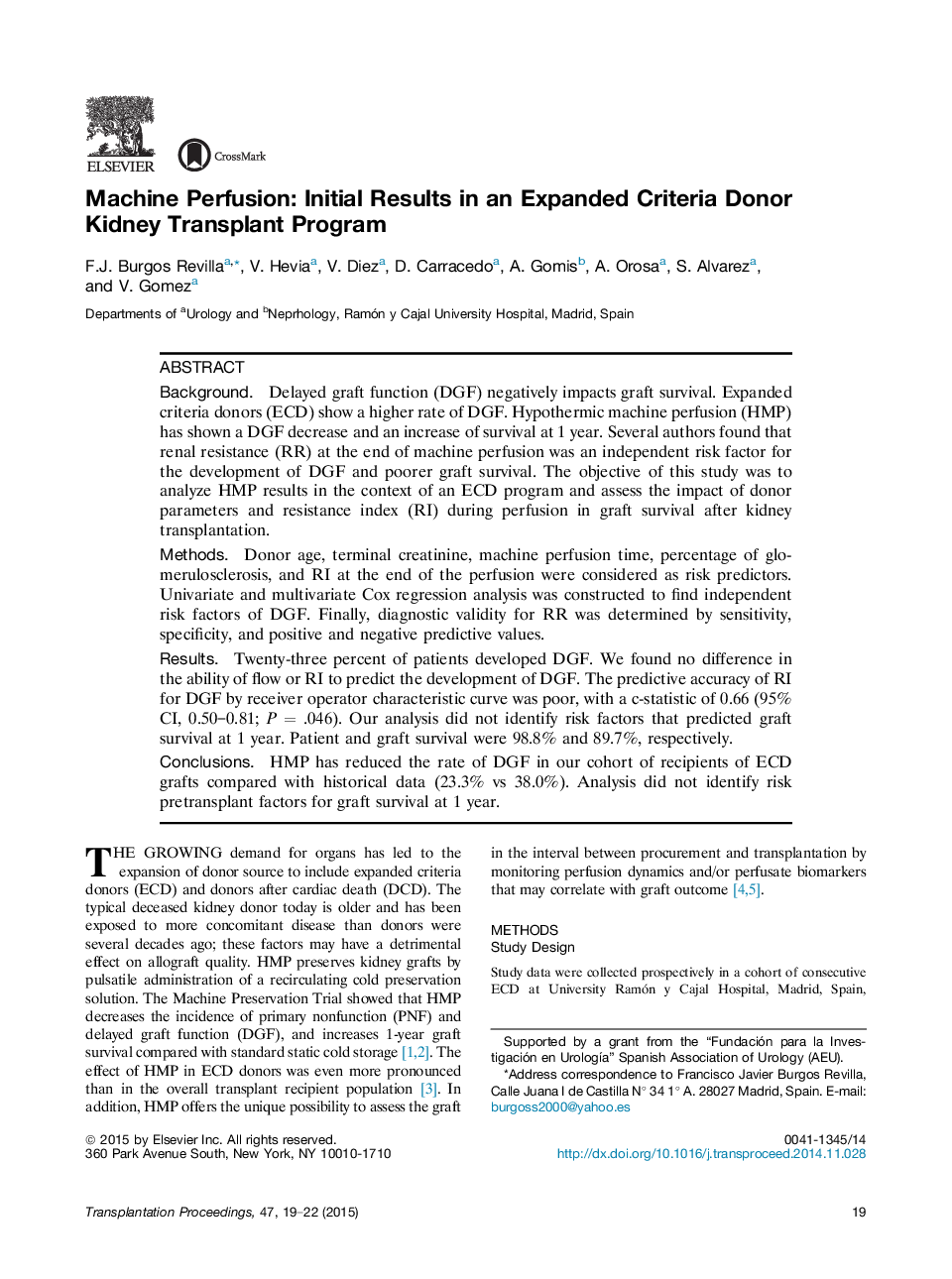| Article ID | Journal | Published Year | Pages | File Type |
|---|---|---|---|---|
| 4256351 | Transplantation Proceedings | 2015 | 4 Pages |
BackgroundDelayed graft function (DGF) negatively impacts graft survival. Expanded criteria donors (ECD) show a higher rate of DGF. Hypothermic machine perfusion (HMP) has shown a DGF decrease and an increase of survival at 1 year. Several authors found that renal resistance (RR) at the end of machine perfusion was an independent risk factor for the development of DGF and poorer graft survival. The objective of this study was to analyze HMP results in the context of an ECD program and assess the impact of donor parameters and resistance index (RI) during perfusion in graft survival after kidney transplantation.MethodsDonor age, terminal creatinine, machine perfusion time, percentage of glomerulosclerosis, and RI at the end of the perfusion were considered as risk predictors. Univariate and multivariate Cox regression analysis was constructed to find independent risk factors of DGF. Finally, diagnostic validity for RR was determined by sensitivity, specificity, and positive and negative predictive values.ResultsTwenty-three percent of patients developed DGF. We found no difference in the ability of flow or RI to predict the development of DGF. The predictive accuracy of RI for DGF by receiver operator characteristic curve was poor, with a c-statistic of 0.66 (95% CI, 0.50–0.81; P = .046). Our analysis did not identify risk factors that predicted graft survival at 1 year. Patient and graft survival were 98.8% and 89.7%, respectively.ConclusionsHMP has reduced the rate of DGF in our cohort of recipients of ECD grafts compared with historical data (23.3% vs 38.0%). Analysis did not identify risk pretransplant factors for graft survival at 1 year.
